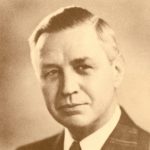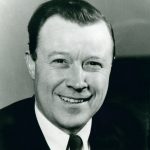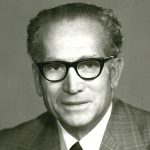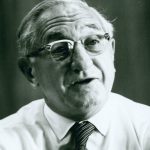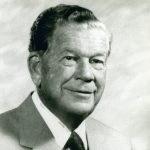In the early years of the industry, Clarence Avery brought clockwork efficiency to automotive manufacturing. He led the development of the moving assembly line for Ford Motor Company in 1913, reducing the production time of the Model T by 78 percent, and changing the automotive manufacturing process forever.
Avery was born in Dansville, Michigan in February 1882. After attending public school, he pursued further education at Ferris Institute and the University of Michigan. He became a teacher of manual training, working in Battle Creek and Ishpeming, Michigan before becoming director of manual training at the Detroit University School in 1907. In 1912, an admiring student named Edsel Ford introduced Avery to his father, Henry. The elder Ford hired Avery and thanks to his belief in “learning by doing,” he had Avery work through every plant operation, even dismantling a Model T and reassembling it.
Avery’s career at Ford reflected his wide-ranging interests and skills. At the request of Henry Ford, he studied traditional methods of industrial glass manufacturing and developed the process of continuous rolling that became an industry standard. Avery was also responsible for organizing and integrating Ford’s newly acquired Northern Michigan timber properties into the company’s internal supply chain of raw materials, transportation, manufacturing, and distribution.
Avery’s technical skills and organizational abilities earned him an appointment as Charles Sorensen’s assistant at Ford’s Highland Park Model T plant. Beginning in 1913, Avery focused on developing the moving assembly line. By timing each stop to maximize the speed of production, Avery and Sorensen utilized time and motion studies to reduce the assembly time of the Model T from 12.5 hours to 2.7.
For a period in the 1920s, Avery oversaw the operations of Henry Ford’s Village Industries and hydroelectric power plants. After Henry Ford purchased the assets of Lincoln Motor Company in 1922, Avery assisted Edsel Ford in the design and development of the newer, streamlined Lincoln vehicles that became a benchmark of automotive design.
Avery left Ford Motor Company in 1927 after Model T production ceased and joined Murray Body Corporation, a nearly bankrupt manufacturer of auto bodies. He began as an assistant to then-president William R. Wilson, lending his organizational skills to improve manufacturing efficiency. He quickly advanced to president and then chairman of the board. He remained with Murray, successfully steering the firm, until his death in 1949.
Avery was one of the first auto executives to work with the United Auto Workers to address employee grievances. Avery offers us this life lesson: “A well understood failure is better than a misunderstood success.”
